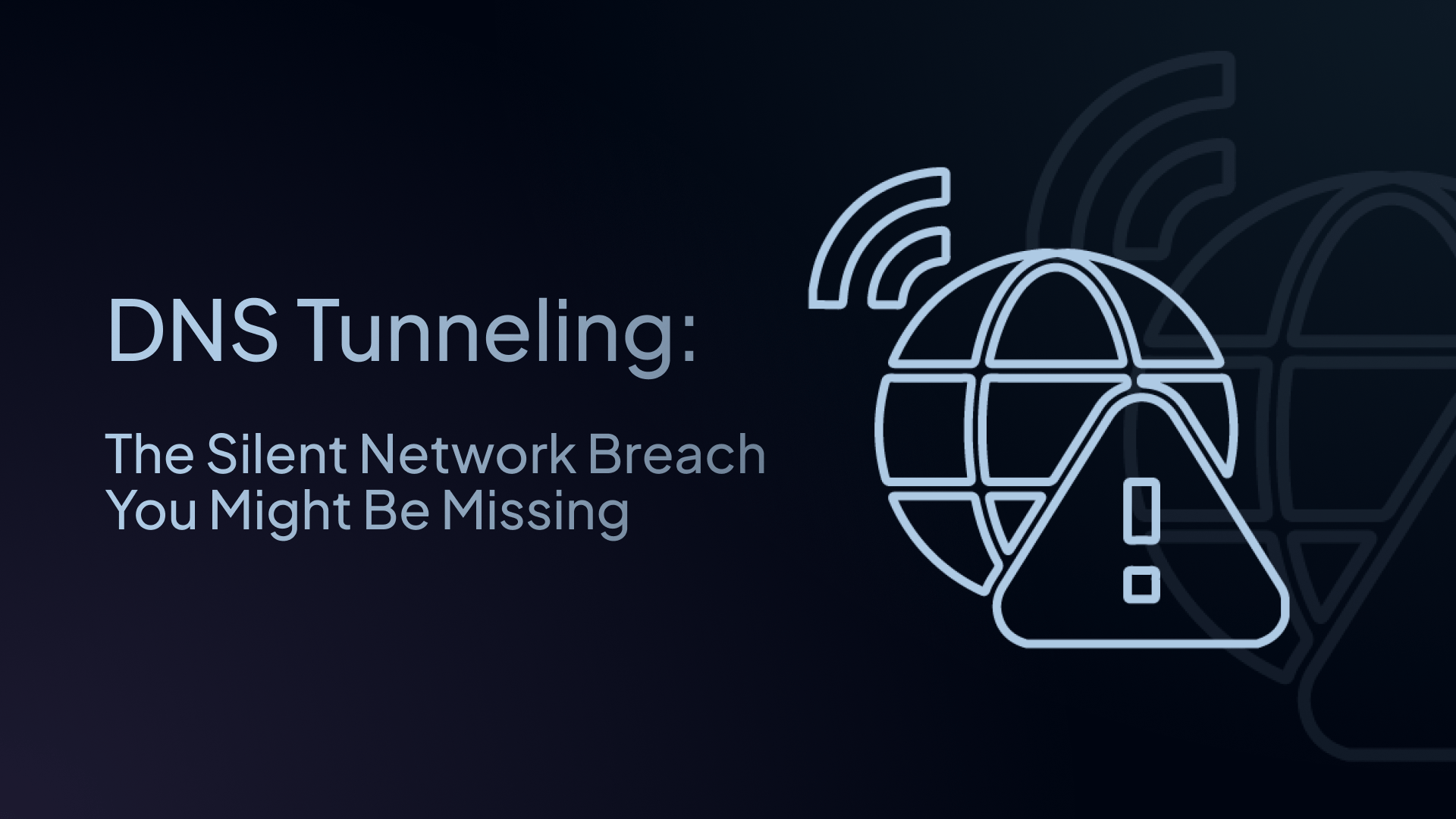DNS Tunneling: The Silent Network Breach You Might Be Missing
Find out how DNS tunneling works, why it bypasses security layers, and what DNS defenses like Control D can do to stop it.

The Domain Name System (DNS) is essential to internet navigation. It acts like a phonebook, translating human-readable website names into IP addresses.
However, because DNS is so widely trusted and often overlooked, attackers have found creative ways to abuse it. One of the most dangerous techniques is called DNS tunneling.
DNS tunneling is when an attacker uses DNS queries and responses to secretly send or receive data, bypassing firewalls, proxies, and normal network controls.
Instead of using DNS just to resolve domain names, malicious actors encode other types of traffic like malware commands, stolen data, or remote access instructions inside DNS packets.
Because DNS is almost always allowed to flow freely through networks, it becomes an ideal backchannel for cybercriminals.
Examples of DNS Tunneling in Action
- Malware Command and Control: A compromised device sends small DNS queries to a command server. Each query contains encoded instructions, allowing attackers to control malware without detection.
- Data Exfiltration: Sensitive files are broken into small pieces and smuggled out by embedding the data in DNS requests.
For example, a credit card database might be slowly leaked by hiding information inside TXT record queries. - Network Evasion: Attackers bypass proxy filters by tunneling traffic inside DNS, reaching restricted websites even under strict corporate controls.
In 2018, security researchers discovered malware called "DNSMessenger" that used DNS tunneling to maintain persistence inside networks, making it nearly invisible to traditional endpoint defenses.
DNS Tunneling Security Issues
DNS tunneling poses serious risks because it exploits trusted infrastructure in stealthy ways. Here are the main security challenges:
1. Evasion of Firewalls and Content Filters
Most organizations allow outbound DNS traffic without strict monitoring.
Firewalls and proxies often ignore DNS because blocking it would cripple internet access. This creates a perfect channel for attackers to hide communication.
2. Difficult Detection
DNS queries involved in tunneling can be designed to look like ordinary traffic.
For example:
- Querying random-looking subdomains
- Using seemingly legitimate domain names
- Splitting payloads across many small queries to stay under radar
Signature-based detection methods often fail because every tunnel session can look slightly different.
Control D users can apply domain reputation filtering, query pattern monitoring, and block known tunneling toolkits' domains and patterns, making it much harder for DNS tunneling to go unnoticed.
3. Data Exfiltration and Breach Risk
Through DNS tunneling, attackers can smuggle out:
- User credentials
- Financial data
- Intellectual property
- Sensitive operational files
Unlike traditional data theft through HTTP or FTP channels, DNS-based exfiltration often bypasses DLP (Data Loss Prevention) systems entirely.
For example, an insider could use a simple DNS tunneling tool like iodine or dnscat2 to exfiltrate customer databases without triggering traditional alarms.
By blocking suspicious record types (like excessive TXT queries) and monitoring query volumes, Control D customers can detect and shut down exfiltration attempts before major data loss occurs.
4. Malware Communication and Persistence
Many modern malware families use DNS to "phone home" to command-and-control (C2) servers.
Because DNS requests blend in with normal network noise, these C2 communications can remain active for months without detection.
If attackers can maintain a covert DNS tunnel, they can update malware, issue new commands, and extract new data — all without triggering standard security alerts.
Control D’s threat intelligence filtering automatically blocks access to domains known to be associated with malware, phishing, and command-and-control servers. This severs malicious DNS tunnels at the resolver level before they can establish stable connections.
5. Increased Insider Threat Risks
DNS tunneling is not just an external threat. Malicious insiders can use it to bypass corporate firewalls and leak data discreetly.
Even low-skilled insiders can download open-source DNS tunneling tools and set up covert channels in less than an hour.
For organizations managing sensitive environments, Control D allows creation of strict DNS policies, audit logging, and alerting for abnormal DNS behaviors.
Common DNS Tunneling Tools
Several freely available tools facilitate DNS tunneling:
| 🔧 Tool | 📖 Description |
|---|---|
| 🛠️ iodine | Tunnels IPv4 data through DNS queries to a remote server |
| 🔒 dnscat2 | Creates encrypted command channels over DNS |
| 🌀 OzymanDNS | Tunnels shell sessions via DNS records |
| 📤 DNSExfiltrator | Steals data by encoding it into DNS queries |
Security teams must be familiar with these tools to better detect and counter tunneling attacks.
Detecting DNS Tunneling
Detection strategies include:
- Monitoring Query Volume: Excessive DNS query counts from a single host can be a red flag.
- Looking for Long or Random Subdomains: Encoded data often results in bizarrely long or seemingly random subdomain strings.
- Monitoring Record Types: Abnormal usage of TXT or NULL records may indicate tunneling.
- Analyzing Response Sizes: Tunneling often results in larger-than-normal DNS responses.
- Behavioral Analytics: Observing changes in device behavior, like spikes in DNS traffic during off-hours.
Preventing DNS Tunneling
Strategies to prevent DNS tunneling include:
- Using Encrypted DNS (DoH or DoT): Prevents external interception but must be combined with internal monitoring.
- Blocking Unauthorized External DNS: Force all devices to use controlled internal resolvers.
- Implementing Threat Intelligence Feeds: Block access to known malicious domains automatically.
- Monitoring and Alerting: Use tools like Control D to observe DNS query patterns and respond quickly to anomalies.
- Training and Awareness: Educate IT staff and users about DNS-based threats.
Why DNS Tunneling Detection Should Include the Resolver Layer
Firewall inspection is important, but resolver-level detection adds critical redundancy.
Control D acts as an intelligent resolver, enforcing policies that can:
- Block high-risk record types
- Alert on suspicious domain generation patterns
- Detect anomalous traffic patterns that indicate tunneling
By stopping DNS tunneling at the resolver level, you add another line of defense between your network and attackers.
Conclusion
DNS tunneling is a stealthy, highly effective tactic for attackers seeking to steal data, bypass controls, or maintain persistence.
Modern security strategies must treat DNS traffic as a monitored, protected asset.
Control D provides the tools to not only encrypt DNS traffic but to actively detect and stop DNS tunneling efforts before they cause lasting damage.
In today's threat environment, assuming DNS traffic is harmless is a risk few businesses can afford.


